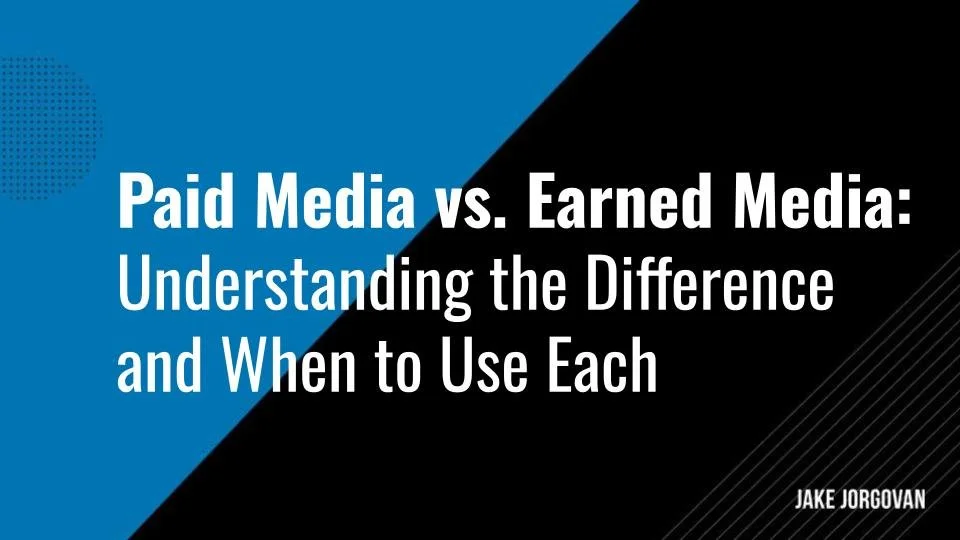How to Create a Marketing Plan That Works in 2025
Creating a marketing plan feels like an uphill battle. Most articles give you theory and buzzwords but lack actionable steps.
You need a comprehensive marketing plan that works in the real world.
This article is different.
We’ll create a fictional company, build an effective marketing plan from scratch, and even show you how to beat a brand like Oreo.
You’ll see every part of the process — from defining your target market to setting SMART marketing goals.
We’ll map out marketing objectives, explore marketing channels, and assign a marketing budget.
By the end, you’ll have a clear path to hit your marketing goals and grow your customer base.
No fluff. No overblown theory. Just action.
Let’s get started.
P.S. Need expert help to put your marketing plan into action? Check out our list of the Top 35 Performance Marketing Agencies. These agencies specialize in driving results, improving conversion rates, and helping businesses achieve their marketing objectives.
What is a Marketing Plan?
A marketing plan is a strategic document that outlines a company's advertising approach to reach its target market and achieve specific marketing objectives.
It details the tactics, marketing channels, and marketing budget allocated to promote products or services effectively.
“Marketing strategy will impact every piece of your business, and it should be tied to every piece of your business.” - Brandon Andersen, Chief Strategist of Ceralytics.
And it pays off. Marketers who proactively write a marketing plan are 356% more likely to report success.
What are Different Types of Marketing Plans?
Developing a marketing plan requires selecting the appropriate type to align with your business objectives.
Here are several specialized marketing plans:
General marketing plan: An annual or quarterly blueprint detailing overarching strategies, company mission, and marketing goals. It serves as the foundation for all marketing activities.
Product launch marketing plan: A step-by-step guide for introducing a new product or entering a new market. It focuses on building awareness among potential customers and driving immediate sales.
Paid marketing plan: Encompasses strategies like pay-per-click, paid social media advertising, and native advertising. Audience research is crucial here to maximize return on investment.
Content marketing plan: Outlines strategies for creating and distributing valuable content to engage your target audience. This includes defining types of content such as blog posts, videos, and infographics. As a side note, 74% of companies report that content marketing has boosted lead generation.
SEO marketing plan: Focuses on improving organic traffic through search engine optimization. It involves keyword research, on-page optimization, and link-building strategies.
Social media marketing plan: Details strategies for engaging with your ideal customer on platforms like Facebook, Instagram, and LinkedIn. It includes planning social media campaigns and measuring social media traffic.
Marketing Plan Templates
Here’s the one-page marketing plan template in table format:
| Section | Details |
|---|---|
| Business Overview |
Company Name: Mission Statement: Key Products/Services: Target Audience: |
| Marketing Goals |
1. <Goal 1> 2. <Goal 2> 3. <Goal 3> |
| Unique Value Proposition |
What makes your product/service unique? How do you solve your customers' problems? |
| Target Market |
Primary Audience: Demographics: Psychographics: Secondary Audience: |
| Marketing Channels |
Online: Social Media, Email, Paid Ads, SEO, Content Marketing Offline: Events, Direct Mail, Networking |
| Key Messaging |
Core Message: Tone of Voice: (e.g., professional, conversational, bold) |
| Budget |
Total Marketing Budget: Allocation: - Paid Ads: - Content Creation: - Tools/Software: |
| Action Plan |
Step 1: (e.g., Launch a social media campaign) Step 2: (e.g., Publish weekly blog posts) Step 3: (e.g., Run a promotional offer) |
| Key Performance Indicators |
Traffic: Website visits, social media reach. Engagement: Likes, shares, comments, email open rates. Conversions: Leads generated, sales, ROI. |
| Timeline |
Month: <Activity/Goal> Example: January - Launch campaign to increase traffic by X% |
| Review and Adjust |
Frequency: Monthly/Quarterly reviews. What to Evaluate: - Performance against goals. - Effectiveness of channels. - Adjustments for improvement. |
You can copy and paste this table directly into your document or tool.
If you want a fancier document, here are some services that offer customizable marketing plan templates:
Canva: Offers a variety of professionally designed marketing templates that you can easily customize to fit your brand's needs.
Visme: Features a free marketing plan maker with a selection of templates, allowing you to create detailed plans with data visualization tools.
Smartsheet: Offers a range of free marketing plan templates, including options tailored for small businesses and digital marketing strategies.
Utilizing these resources can help your marketing team develop a clear, actionable plan that effectively targets your ideal customer and achieves your marketing objectives.
Why do you Need a Marketing Plan?
A well-structured marketing plan is indispensable for achieving business success. It provides clear direction, aligning your marketing efforts with your business objectives.
The problem is that 44% of businesses lack a quantitative understanding of their marketing's impact. This tells us they don’t have a well-defined strategy.
By comparison, companies with a documented marketing plan are more likely to identify their target market accurately, leading to more effective marketing campaigns.
In essence, a marketing plan serves as a roadmap, guiding your marketing team toward achieving specific, measurable outcomes.
What is the Difference Between a Marketing Plan and a Marketing Strategy?
A marketing strategy defines your company's long-term goals and the approach to reach your target market.
Marketers who document their strategy are 538% more likely to report success.
In contrast, a marketing plan details the specific actions, timelines, and marketing channels to execute that strategy.
Marketing Plan vs. Business Plan
A marketing plan focuses on promoting and selling products/services, detailing the target audience, strategies, channels, and metrics. A business plan outlines the overall vision, goals, operations, financials, and strategy for the company. The marketing plan is a subset of the business plan, which covers broader organizational aspects.
Here’s a clear comparison between a marketing plan and a business plan:
7 Steps to Create a Comprehensive Marketing Plan
We promised you a practical guide, so let’s get started. Let’s say we launch Nebula Nibbles, a cookie brand that wants to outcompete Oreo.
To succeed, we need a comprehensive marketing plan that identifies our target market, outlines clear marketing objectives, and drives measurable growth.
Follow these seven steps to see how we take Nebula Nibbles from idea to execution:
1. Conduct a Situation Analysis
Start by evaluating where your business stands.
Look at your brand historically to analyze your strengths, weaknesses, and resources. Audit your existing marketing efforts to identify what’s delivering results and where gaps exist.
Externally, examine market trends shaping customer behavior and influencing demand. Dive into demographic shifts that impact purchasing decisions.
Competitor research is non-negotiable—understand their positioning, pricing strategies, and customer engagement tactics.
Leverage tools like SWOT analysis and competitive benchmarking to quantify your findings.
For Nebula Nibbles, we want to beat Oreo. So, here’s what we find out through SWOT:
We first evaluate our premium ingredients, unique flavors, and eco-friendly packaging as strengths.
We also acknowledge challenges like high production costs and limited brand awareness.
Opportunities lie in rising demand for sustainable snacks and expanding into online retail channels.
At the same time, we monitor potential threats like competitor price undercutting and economic downturns.
You can put all this in a table, like so:
2. Define Clear Marketing Objectives
Set goals that follow the SMART framework: specific, measurable, attainable, relevant, and time-bound.
This keeps your team focused and accountable. Tie these objectives directly to business priorities.
For example, increasing Nebula Nibbles’ online sales by 20% in six months aligns with revenue growth targets.
To outcompete Oreo, Nebula Nibbles needs to differentiate itself in areas where Oreo struggles.
For instance, Oreo might dominate in brand recognition, but it lacks a focus on sustainability or premium, health-conscious ingredients. By emphasizing these unique selling points (like eco-friendly packaging or clean-label recipes), we can capture a growing audience segment that prioritizes these factors. Objectives like partnering with sustainable snack subscription boxes or leveraging influencer marketing to promote "better-for-you" indulgence will position Nebula Nibbles as a fresh, innovative alternative.
Pro tip: Prioritize objectives based on potential ROI and feasibility, focusing on initiatives that drive measurable results.
Short-term goals, like boosting website traffic, support long-term targets, such as market expansion.
Also, every objective must include clear metrics for success, ensuring accountability.
Aligning marketing goals with business outcomes lets you create a roadmap for growth that avoids wasted effort.
3. Identify Your Target Audience
Identifying your target audience is a strategic move that can significantly enhance marketing effectiveness.
By conducting market segmentation, you divide a broad market into distinct groups based on shared characteristics, enabling tailored marketing strategies.
Developing detailed buyer personas—fictional representations of your ideal customers—further refines this approach.
Notably, 56% of companies have reported generating higher-quality leads using buyer personas, and 36% have achieved shorter sales cycles through their implementation.
To directly compete with Oreo, Nebula Nibbles must focus on segments where Oreo has less dominance or blind spots.
For example, we could target eco-conscious millennials and Gen Z customers who feel Oreo’s traditional production methods and packaging don’t align with their values.
Similarly, we could capture the health-conscious "Busy Brenda," a working mom who avoids sugary snacks for her kids, by promoting Nebula Nibbles as a nutritious, guilt-free indulgence. For "Student Sam," a college student, we could highlight the affordability and flavor-packed innovation of Nebula Nibbles’ offerings, presenting them as a trendy, sustainable alternative to Oreos.
These personas help us craft marketing campaigns that directly address Oreo's weaknesses, strengthening Nebula Nibbles’ appeal and capturing market share.
4. Develop Your Marketing Strategy
Start by selecting a positioning strategy that highlights what sets your brand apart.
Avoid vague claims—anchor your differentiation in measurable outcomes or unique offerings.
Next, refine the 4 Ps of marketing to align with your audience’s priorities.
Fine-tune your product features, pricing models, placing (aka distribution channels), and promotions based on research-backed insights.
Finally, identify the most effective tactics to connect with your audience.
Whether it’s content-driven outreach, performance marketing, or account-based strategies, focus on what drives measurable engagement.
Each decision must tie back to your goals, ensuring every tactic delivers value.
For Nebula Nibbles, we position ourselves as the sustainable, premium cookie alternative for families and individuals looking for indulgent yet eco-friendly options. Unlike Oreo, we emphasize our clean-label ingredients, compostable packaging, and commitment to giving back through environmental initiatives.
Product: Offer a unique selling point with premium flavors, such as "Cosmic Caramel Crunch" and "Nebula Nutty Delight," all using organic and ethically sourced ingredients.
Price: Price slightly above Oreo to reflect the quality but offer discounts for bulk online purchases to drive adoption.
Place: Focus on eco-friendly specialty retailers, health food stores, and e-commerce platforms. Offer subscriptions for regular cookie deliveries, appealing to Busy Brenda and Student Sam.
Promotion: Use influencer collaborations with eco-conscious lifestyle bloggers, social media ads highlighting sustainability stats (e.g., "X% less plastic waste than traditional cookie brands"), and campaigns like “Taste the Future of Cookies.”
Our goal: attract audiences who feel underserved by Oreo’s mass-market approach, carving out a niche in premium, sustainable snacks while maintaining broad appeal.
5. Plan Your Marketing Tactics
Translate your strategy into actionable campaigns. Identify the best channels, formats, and timing for reaching your audience.
Build a content calendar that maps out posts, emails, ads, and events with clear timelines. Set deadlines and assign owners for each task to maintain accountability.
Focus on tactics that align with your goals—whether that’s driving leads, improving retention, or increasing brand visibility.
Prioritize high-ROI activities, such as targeted paid ads or industry-specific partnerships.
Align your resources effectively, balancing budget, tools, and talent to execute each campaign seamlessly. Stay agile by revisiting plans regularly to adapt to results and trends.
For Nebula Nibbles, we’ll execute a multi-pronged campaign to outshine Oreo:
Social media: Schedule weekly Instagram Reels showcasing our cookies in eco-friendly, cosmic-themed packaging with ASMR cookie-crunch sounds to captivate dessert lovers.
Paid ads: Launch geo-targeted Facebook and Google ads with the tagline "Upgrade Your Cookie Jar: Go Premium with Nebula Nibbles" to emphasize quality and sustainability.
Influencer partnerships: Collaborate with eco-conscious lifestyle influencers and micro-influencers in the dessert niche to amplify our message and build trust.
Seasonal campaigns: Roll out a “Galactic Holiday Box” during the festive season, featuring limited-edition flavors and compostable gift packaging to attract eco-conscious holiday shoppers.
Content calendar: Map out daily posts, monthly blog updates (e.g., "Why Sustainable Snacks Are the Future"), and bi-weekly email campaigns, ensuring consistent engagement and visibility.
Each task has a dedicated owner, and progress is tracked weekly to ensure we stay ahead of trends and continuously refine our tactics.
Every move supports our broader mission: positioning Nebula Nibbles as the go-to premium, sustainable cookie brand that Oreo can’t match.
6. Set Your Marketing Budget
Estimate costs for each activity. Base allocations on expected ROI, not guesses. Prioritize high-impact strategies tied to measurable goals.
If the budget doesn’t cover all tactics, focus on activities with the strongest ROI or quickest wins.
Pro tip: Cut or delay low-impact initiatives without compromising quality.
Of course, you need to monitor spending against the budget monthly, flagging deviations early. Adjust allocations where necessary to maintain financial efficiency.
Also, we advise you to use historical data to validate assumptions and identify areas to optimize. Avoid overspending on unproven channels.
Even better pro tip: Test small before scaling investments.
A tighter budget forces clarity—spend smarter, not broader, to maximize outcomes.
For Nebula Nibbles, we’ll prioritize social media ads and influencer partnerships, which drive the highest ROI for snack brands.
We'll allocate 60% of our budget there, 25% for in-store sampling, and 15% for email campaigns.
If funds fall short, we'll delay sampling and scale social ads strategically for quick wins.
7. Establish Metrics and Monitor Performance
Set clear KPIs to evaluate campaign success. Align these metrics with specific goals like lead generation, conversion rates, or customer acquisition costs.
Use tools such as Google Analytics, HubSpot, or SEMrush to gather actionable data. Automate reports to simplify tracking.
Analyze trends over time to pinpoint underperforming strategies or identify areas for growth. Use this data to adjust your budget, allocate resources efficiently, and scale high-performing campaigns.
A continuous feedback loop ensures your marketing stays aligned with business goals. Success lies in the ability to act on insights quickly—optimize, reallocate, and amplify what works.
For Nebula Nibbles, we’ll track KPIs like cost per acquisition (CPA), website traffic, and return on ad spend (ROAS). These metrics directly inform our ability to outperform Oreo in key areas such as cost efficiency, audience engagement, and revenue growth.
Using Google Analytics and Meta Ads Manager, we’ll monitor which campaigns drive the highest sales and engagement.
For example, if Instagram ads featuring our eco-friendly packaging outperform Oreo’s traditional ads in engagement, we’ll reallocate the budget to scale this advantage, building a stronghold in the eco-conscious consumer segment—a market Oreo has not dominated.
Additionally, by optimizing CPA, we can ensure Nebula Nibbles captures customers at a lower acquisition cost than Oreo, freeing up budget to expand into niche segments. Tracking website traffic allows us to measure how well our “Galactic Holiday Box” campaigns drive visits, helping us improve conversion strategies and capture Oreo’s online market share. Real-time data keeps us agile, enabling swift adjustments to capitalize on Oreo’s weaknesses, such as their limited focus on sustainability or niche flavors.
In essence, these metrics don’t just measure our success—they guide our strategy to outmaneuver Oreo in every key performance area.
Why a Well-Structured Marketing Plan Drives Results: Focus, Adapt, Succeed
As you just saw from our example above, a well-structured marketing plan gives you direction, ensuring every action drives measurable results.
It’s how you align your team with clear objectives and focus resources on the highest-impact strategies.
Of course, you need to regularly review and update your plan to adapt to shifting trends and opportunities.
Ignoring this process risks wasted budgets, scattered efforts, and missed growth.
Remember: Success in marketing comes from strategy, execution, and the discipline to refine as you grow.
Start strong and keep iterating.
P.S. Ready to take your marketing plan to the next level? Check out our Best 31 Outsourced Marketing Services and Companies. These experts specialize in executing strategies, optimizing campaigns, and delivering results so you can hit your goals faster.
Frequently Asked Questions
What are the 5 C's of a marketing plan?
The 5 C’s—Company, Collaborators, Customers, Competitors, and Climate—form the foundation of a marketing analysis. They help define your current situation and external factors. Understanding your company’s strengths, partners, target customers, competitor positioning, and market conditions enables a more effective plan. These elements provide insights for refining your marketing strategy, allocating financial resources, and planning targeted promotional activities.
How do I create a simple marketing plan?
Start with goal setting using SMART goals. Define your target audience and customer segments. Identify types of marketing channels to reach them. Outline key marketing activities and a marketing budget. Map action items with a timeline for execution. Use a marketing plan template download to simplify formatting and structure. Measure performance against clear metrics to adjust tactics quickly.
What tools can I use to create a marketing plan?
Project management software like Asana or ClickUp keeps your marketing team organized. Google Analytics provides insights into customer behaviors and organic traffic. HubSpot aligns inbound marketing activities with lead tracking. SEMrush and Ahrefs optimize digital channels for SEO marketing plans.
What are some free resources for creating a marketing plan?
Canva and Visme offer marketing plan templates for actionable planning. Smartsheet provides a customizable marketing plan worksheet to streamline your process. HubSpot offers guides for building digital marketing strategies. Google Trends analyzes market trends to inform types of content. SCORE.org delivers tools for small business owners, including simple marketing plan formats and goal-setting resources.
How often should a marketing plan be updated?
Review your marketing plan quarterly to adapt to market trends, audience segments, and competitive analysis findings. Regular updates ensure alignment with business strategy and shifts in customer journey behaviors. Annual reviews help optimize overarching marketing strategies, financial resources, and short-term goals. If launching a new marketing initiative or digital marketing campaign, adjust the plan immediately.



















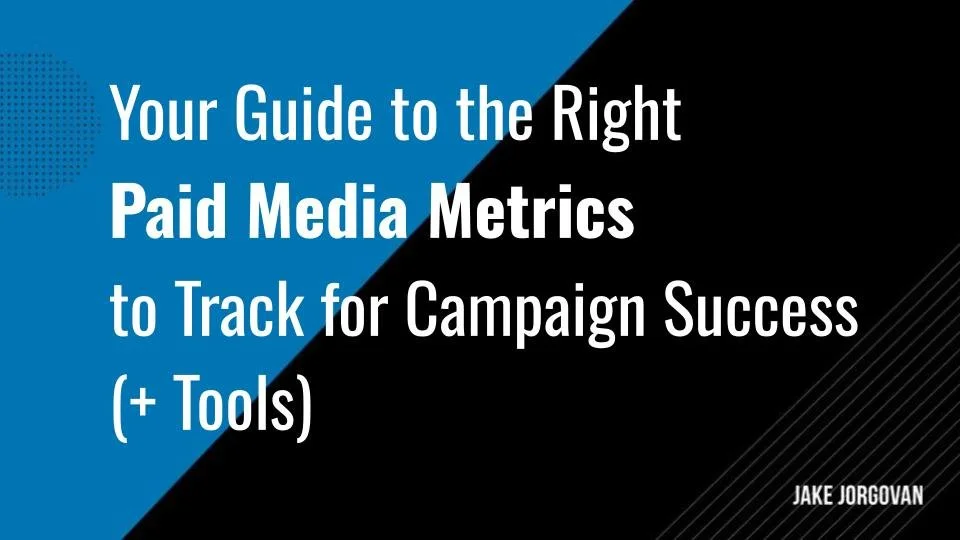



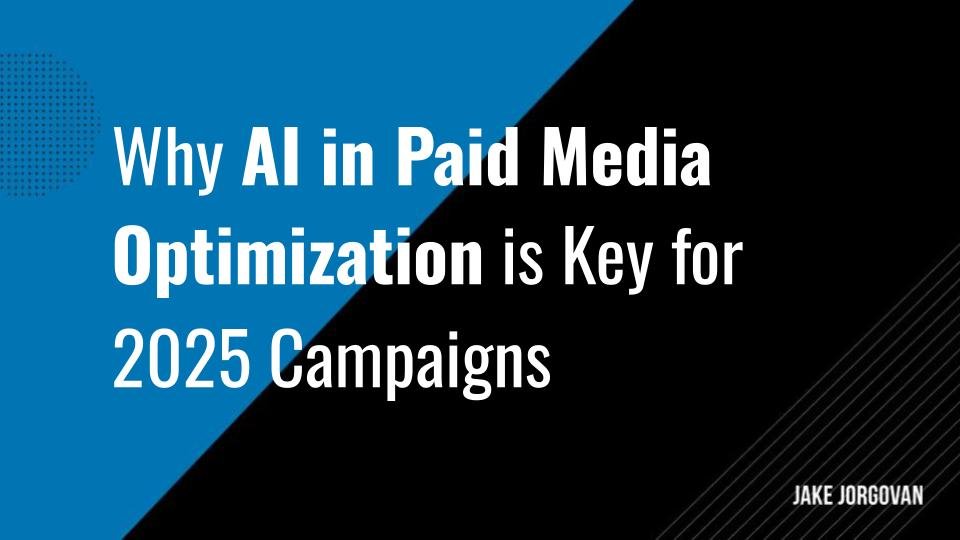
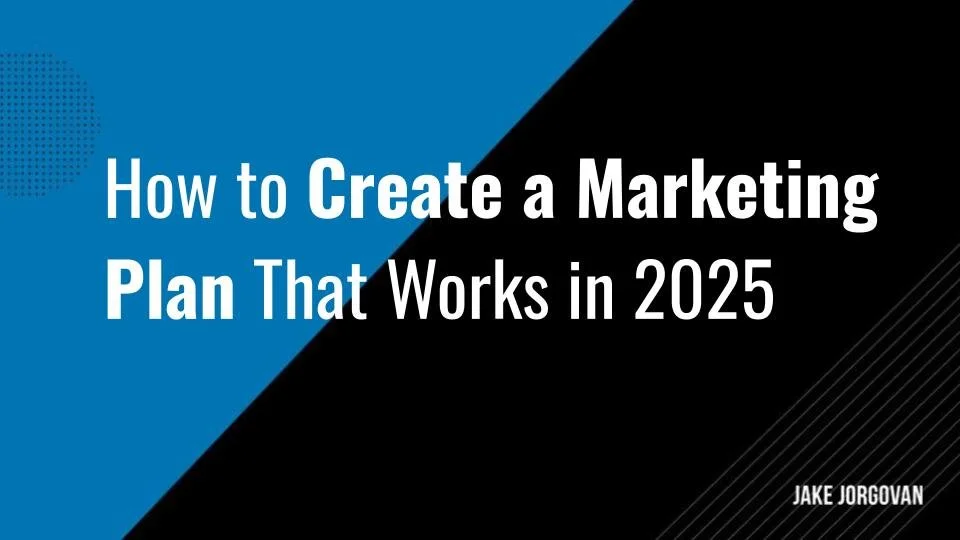
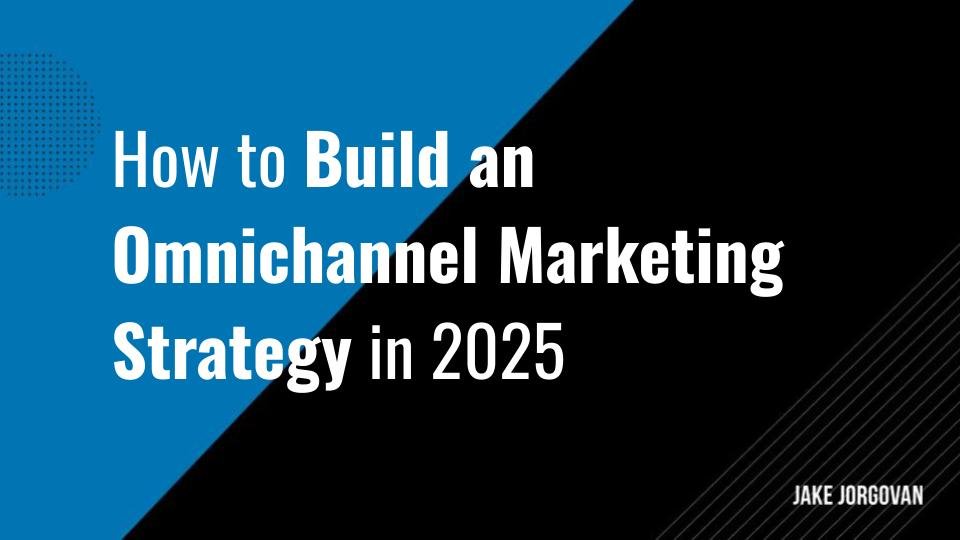

![Top 22 Paid Media Agencies to Work With in 2025 [Updated in March]](https://images.squarespace-cdn.com/content/v1/50baa49de4b0e51d69257e33/1705515561307-56Z45GN80B4L6J77ELDR/Top+12+Paid+Media+Agencies+to+Work+With+in+2024+%5BUpdated%5D.jpg)







